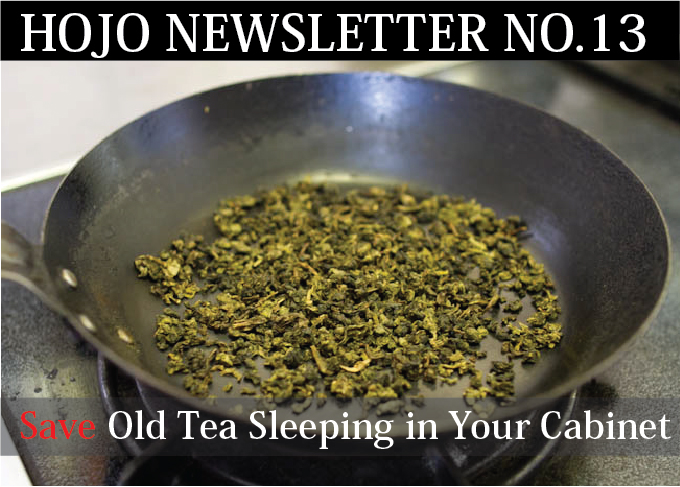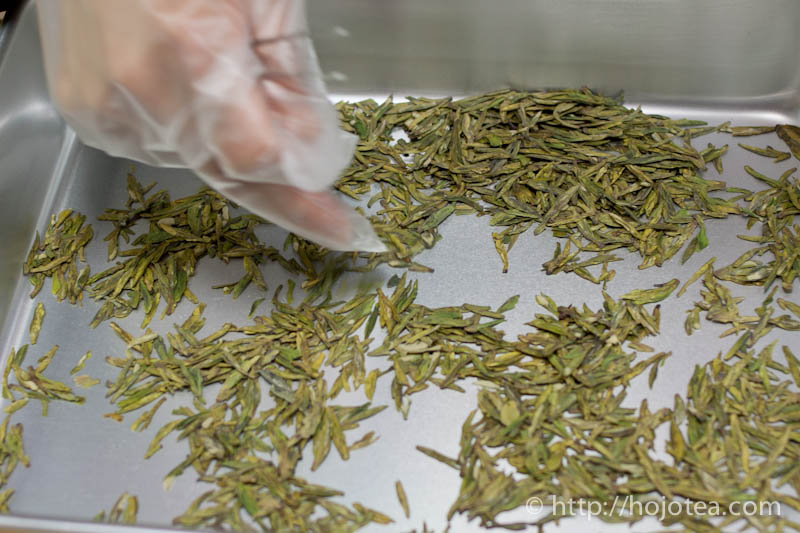
Good day to you.
I hope this e-mail find you in good health.
I am Akira Hojo from HOJO TEA SHOP. You are receiving this email because you have registered on our email list when you visited my shop at The Gardens Mall in Mid Valley City, Kuala Lumpur or you have registered on our mailing list on the website.
Do not you have a lot of teas that are "sleeping" in your cabinet for a long time?
I am sure these teas no longer give fresh flavour but oxidized smell.
In this newsletter, I would like to explain how to salvage the "spoiled tea".
In fact, it is safe to consume tea even if it is kept for more than 10 years. We can drink very old Pu-erh. Why not other types of tea? Both Pu-erh and other teas are produced from Camellia sinensis.
By right there is no harm to drink any tea that has been kept for 5-10 years. The only concern is that those over-kept teas won’t give as nice flavour as when it’s fresh.
The technique to salvage tea is simple: we need to re-fire the tea.All you need is the gas stove and a frying pan.
First of all, heat up the frying pan until smoke comes up. This is very important to make sure burn and eliminate the oil residue that remained on the surface of frying pan.After that, cool down the frying pan and apply small fire. Pour in adequate quantity of tea leaves and fry the leaves. You must keep turning around the leaves on the pan so that the fire is not concentrated on one spot. After heating for several minutes to 10 mins, you would smell slight baking aroma. Stop the fire and thinly spread the tea leaves over a piece of paper to cool it down.
Please make sure tea leaves are completely cooled down before it’s repack. If the leaves are kept while it’s still warm, it will re-absorb the moisture and being spoiled again.
The technique mentioned above is very useful for oolong tea in particular. If you apply this technique for terribly oxidized Taiwan oolong, you will be able to regain very fresh flavour just like light fired oolong.
Hojo’s Long Jing is made of mixed cultivar from the old tea trees in Shi Feng Mountain. The number of old tea trees is very limited in Shi Feng. In order to secure the right quality, we have to reserve the quantity one year in advance.
The growing speed of tea tree affects to the quality of tea. Young tree grows faster and thus less mineral stays inside the tea leaves. Tea from young tea tree gives a strong up-coming aroma, yet very less flavour remains in our throat after drinking.
On the other hand, the old tea tree grows very slow. Each new leaf has more time to accumulate minerals as well as organic substances. This is the tea that we are looking for.
Once you have tasted this type of tea, you will realize that Long Jing is not light in taste but gives very full body and sweet lingering taste.
http://hojotea.com/item_e/g06e
 |
 |
This year onwards, we decided to upgrade the quality of Dong Ding oolong. The new quality gives deeper aftertaste and fruity flavour thanks to the higher degree of fermentation.
Nowadays, Taiwan oolong tea is usually lightly fermented and it tends to give more greenish flavour with a hint of floral note. Our previous quality was exactly fall into this style. If you happen to like this kind of character, both Wen Shan Bao Zhong (文山包種茶) and Ali Shan Cha (阿里山茶) gives very similar drinking feeling.
Our new Dong Ding Oolong gives very deep and richly sweet flavour with a hint of honey note, and a mixture of fruity fragrance that reminds me of fresh peach.
http://hojotea.com/item_e/o06e
Please visit our shop at The Gardens Mall and try it out.
Work location: Kuala Lumpur, Mid Valley, The Gardens Mall or Office at Desa Sri Hartamas
http://www.hojotea.com/info_e/profilee.htm
1. Working Experience: Not required in particular. Fresh graduate are encouraged to apply.
2. Malaysia residence
3. Language: Able to write and speak both in English and Chinese
4. Able to work 2-4 days on week day
5. Salary RM1800 and above upon confirmation.
If you are interested, please send us a resume at following email address:
![]()